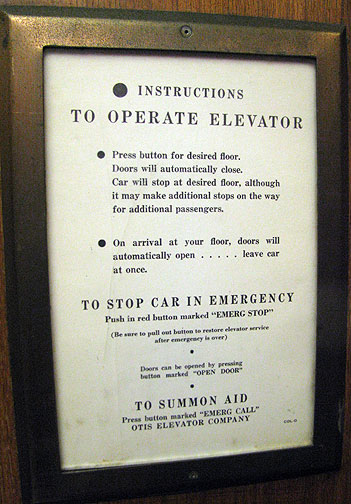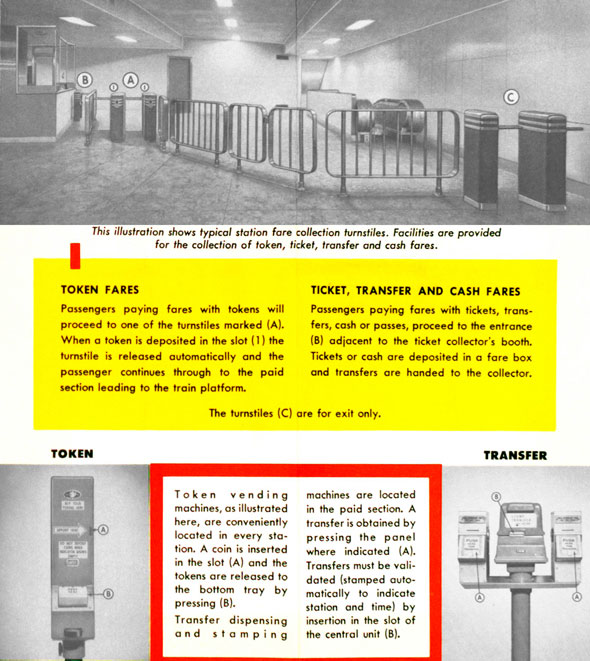Yes, many red gates are green on the opposite side. That is very helpful at peak.
But, there is a distinction between the red "⊖" (1-way) and the red "X" (out-of-service)
One of them is a one-way gate, and the other one is out-of-service gate.
There are actually two separate problems at play:
- Gates actually out-of-services. Red on both sides.
(e.g. Presto issue, gate hardware issue)
- Gates inefficiently configured to 1-way at the wrong times and/or wrong positions
(e.g. station not crowded, or not efficient with prevailing pedestrian crowd flow)
When reporting here, look behind the red gates to see if they're red on both sides. The gates that are red/green are 1-way gates.
Ideally, the 1-way gates are for efficient pedestrian traffic flows (e.g. overwhelming inflow/outflow pattern), and clearing out stations (e.g. closing time) but they can be quite inefficiently configured when a transit agency is inexperienced with them. Common ideal configuration would be most gates being 2-way, with a number of leftmost/rightmost gates being 1-way depending on time of day and location of prevailing traffic flows.
But the Gee-Whiz factor means gates are often inefficiently configured to 1-way when they don't need to be even at peak, forcing people to walk in front of each other, to go to other gates, just to get their 1-way gates, slowing things down (in a futile attempt to improve passenger flows via 1-way gate operation).
I suspect a common temptation is for transit agencies to overutilize 1-way operation whenever 2-way operation is more appropriate for one reason or another (amount of foot traffic, location of incoming foot traffic flow, location of outgoing foot traffic flow, etc) Especially if TTC is letting booth operators decide when to enable 1-way operation.
It doesn't help many people are confused (adding to all the above); in some cases it's better to just keep them as 2-way (at first) because that's what people are used to (TTC gates already being 2-way) and already habitually avoid walking into each other. However 1-way gates can be a great tool (e.g. clearing out a station after closure, or carefully optimizing traffic flow at a specific crowded station).
While I haven't verified if the gates in question are 1-way or out of service (...though I've seen
both the X and ⊖ everywhere...) -- it is quite possible that TTC is undergoing the learning curve of optimizing 1-way gate operation. Give them time, including setting rules for inexperienced booth operators on whenever to enable/disable 1-way gate operation.
Some TTC considerations that probably leans 2-way and letting people deal with directional issues themselves (rather than the gates):
-- Prevailing habit (Observation: Existing turnstiles are 2-way).
-- Encouraging customers more (Observation: Red discourages customers)
-- Pedestrian cross-flow issues (Observation: Red gates forces people to walk in front of others to reach other 1-way gates, creating more crowd conflict than simply doing 2-way)
So in many cases 1-way (with its pros/cons) hurts more than 2-way (with its pros/cons). The Right Tool for the Right Job, but the tool isn't always used correctly by all transit agencies, especially at first, for their specific systems. The moral of the story is "
Use 1-way properly"
If it's the case that the red
⊖ are the 1-way gates, then an efficiency optimization TTC (while Presto is still working on reliability issue) can do is to automatically turn all working 1-way gates into working 2-way gates whenever adjacent gates are out-of-service. That only working gate between two out-of-service gates is infernally a 1-way gate, making opposite traffic flow even more inefficient. Basically, this turns an annoying
X-
⊖-
X 3-gate blockage into a more preferable
X-
✔-
X because the middle gate is still working.
Either way, yes, those out-of-service gates are quite problematic -- the ones that are red on both sides -- and this often the hardware/Presto/etc fault (0ften at no fault to TTC, alas).







